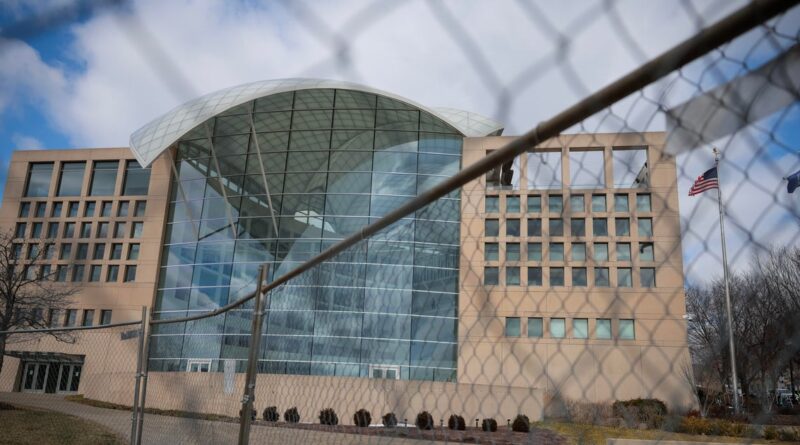Judge rules Trump administration’s dismantling of U.S. Institute of Peace was illegal
Washington — A federal judge on Monday blocked the Trump administration’s efforts to take over the U.S. Institute of Peace, finding that the moves led by the White House’s Department of Government Efficiency were made by leaders who were illegally installed and lacked the legal authority to dismantle the organization.
U.S. District Judge Beryl Howell ruled in favor of several institute board members and its president, who had been fired and challenged their terminations, as well as the administration’s efforts to take over and disassemble the organization. The institute’s mission is to promote conflict resolution and the prevention of conflict around the world.
The five board members who challenged their removals are Ambassador John Sullivan, Judy Ansley, Joseph Falk, Kerry Kennedy and Mary Swig. The institute’s president, Ambassador George Moose, was also ousted by ex officio board members Secretary of State Marco Rubio and Defense Secretary Pete Hegseth. Kenneth Jackson was then installed as the acting president of the Institute of Peace.
In March, Howell declined to issue emergency relief to the Institute of Peace, but said that it was “undisputed” that the removal of board members was not in accordance with federal law, though the plaintiffs at the time were unable to make the required showing for a temporary restraining order.
But in a 102-page decision granting the former board members request to summarily rule in their favor, Howell wrote that President Trump “second-guessed the judgment of Congress and President Reagan in creating USIP 40 years ago, and the judgment of every Congress since then, including in 2024,” when he signed an executive order that effectively dismantled the Institute.
Howell said the purported firings of Institute of Peace board members and its president, Moose, was unlawful and ordered that they remain in their roles. The judge also found that the appointments of Jackson and Nate Cavanaugh as president of the institute are invalid, and said any actions taken by them are voided, including Cavanaugh’s efforts to transfer the organization’s headquarters to the General Services Administration.
Howell blocked DOGE officials from gaining access to or exercising control over the U.S. Institute of Peace’s offices, facilities, computer systems or other records.
In her ruling, the judge criticized Trump and DOGE, writing they “used brute force and threats of criminal process to take over USIP’s headquarters, despite being cautioned that this organization did not fall within the executive branch and its leadership was not subject to the president’s unilateral executive branch removal power.”
The judge said that the Elon Musk-led DOGE’s firing of Institute of Peace Board members, staff, and contractors, as well as its shifting of the building to be used for other purposes was unlawful.
“This administration then went even further, taking severe actions to dissemble USIP, including terminating its appointed board members, its expert management, its dedicated staff and contractors located in both Washington, D.C. and around the world, and dispersing its assets and headquarters building,” Howell wrote. “These actions against USIP were unlawful.”
The judge said that Article II of the Constitution places limits on the president’s ability to remove executive branch subordinates, and said Mr. Trump’s actions regarding the Institute of Peace were outside his legal authority.
“The president’s efforts here to take over an organization outside of those bounds, contrary to statute established by Congress and by acts of force and threat using local and federal law enforcement officers, represented a gross usurpation of power and a way of conducting government affairs that unnecessarily traumatized the committed leadership and employees of USIP, who deserved better,” Howell wrote.
The U.S. Institute of Peace is one of several entities that has been targeted by the president and DOGE as part of his efforts to severely slash the size of the federal government. The organization was created by Congress four decades ago through a law signed by President Ronald Reagan and is characterized as an independent nonprofit corporation.
But the administration has winnowed the institute’s staff to five employees, and it has ceased conducting programmatic activities. The U.S. Institute of Peace’s assets have also been transferred to the General Services Administration. Its Washington, D.C., headquarters is in the process of being leased to the Department of Labor, according to court records.
The dispute between DOGE and the Institute of Peace started in mid-March, when DOGE team members attempted to gain access to the entity’s Washington, D.C., headquarters. The institute said in a statement that several DOGE members arrived at its building “unannounced” and were accompanied by two FBI agents. DOGE officials left after being rebuffed by an Institute employee but later returned and had “broken” into the building and were able to access internal systems through a former security contractor for the building, court filings revealed.
The Metropolitan Police Department became involved when the institute’s former outside counsel reported what he said was an unlawful entry by DOGE officials.
In their lawsuit, the institute’s fired board members said employees with a former security contractor and DOGE personnel “engaged in additional attempts to unlawfully access the USIP headquarters building, but were eventually able to enter the building, forcibly occupy it, and expel including the duly appointed USIP President, other USIP personnel, and outside counsel.”

